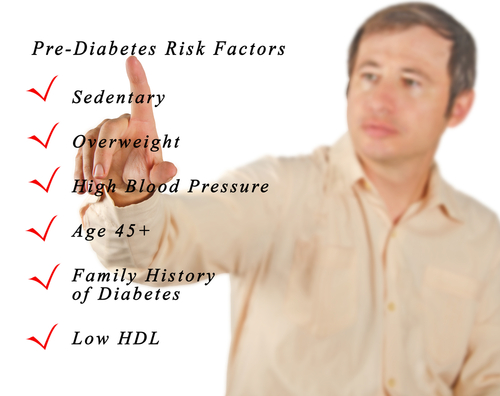 Almost half of American adults suffer from pre-diabetes or diabetes, which increases the risks of other life-threatening or disabling conditions such as heart attacks, blindness, amputations and cancer, according to federal health statistics recently released and published in the current issue of the Diabetologia journal. The analysis included 16 studies and studied nearly 900,000 people.
Almost half of American adults suffer from pre-diabetes or diabetes, which increases the risks of other life-threatening or disabling conditions such as heart attacks, blindness, amputations and cancer, according to federal health statistics recently released and published in the current issue of the Diabetologia journal. The analysis included 16 studies and studied nearly 900,000 people.
The research demonstrated that 12.3% of the population older than 20 years have diabetes, diagnosed or not, and another 37% have pre-diabetes, which means an abnormally high amount of sugar in the blood. The percentage of Americans suffering from the condition has risen 27% in just one decade, and in 30% of the cases, the condition results in type 2 diabetes within five years if not treated and without lifestyle changes, as reported by the U.S. Centers for Disease Control and Prevention.
“It’s bad everywhere,” explained the director of the Barnstable Brown Diabetes and Obesity Center at the University of Kentucky, Philip Kern, in an interview to Laura Ungar in USA Today. “You almost have the perfect storm of an aging population and a population growing more obese, plus fewer reasons to move and be active, and fast food becoming more prevalent.”
Pre-diabetes is a condition that is afflicting an increasing number of people, prompting the attention of public health experts who are now engaged in campaigns to raise the public’s awareness. “We’ve proven pre-diabetes is an intervention time,” stated the association’s managing director of medical information and professional engagement, Matthew Petersen. “It’s a call to action.” The condition can be prevented or delayed with a lifestyle change, especially regarding loss of body weight, eating a healthy diet, and engaging in at least 150 minutes a week of moderate exercise.
In its early stages, the disease has no apparent symptoms, being found only in blood tests, which explains the difficulty in identifying it and why so many times it remains undiagnosed. Only 10% of the 86 million people who suffer from pre-diabetes are aware of it, according to the CDC. One of the ways of promoting a healthy lifestyle and reducing the risk of type 2 diabetes within the population includes an increase in educational programs, which may also help in the reduction of health care costs. The American Diabetes Association reported that, last year, diabetes cost the U.S. $245 billion.


